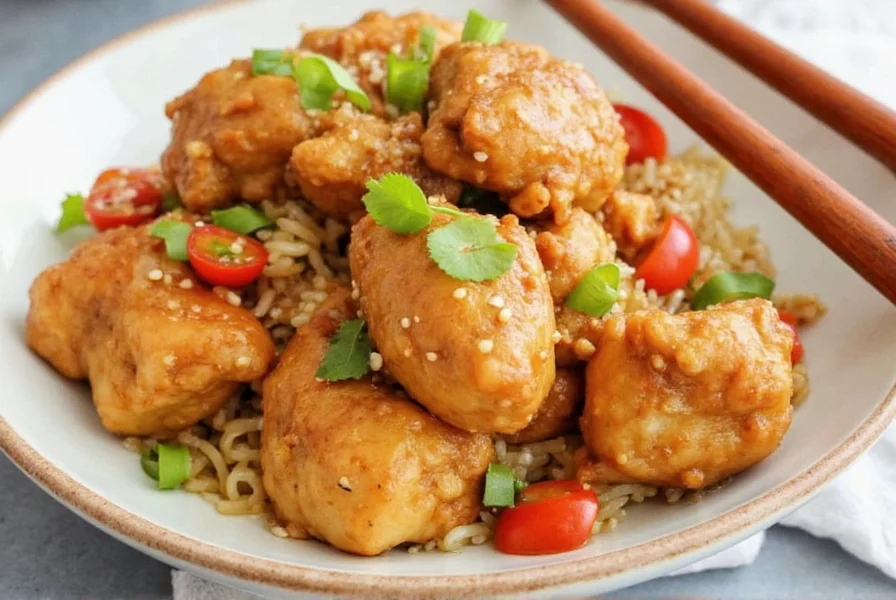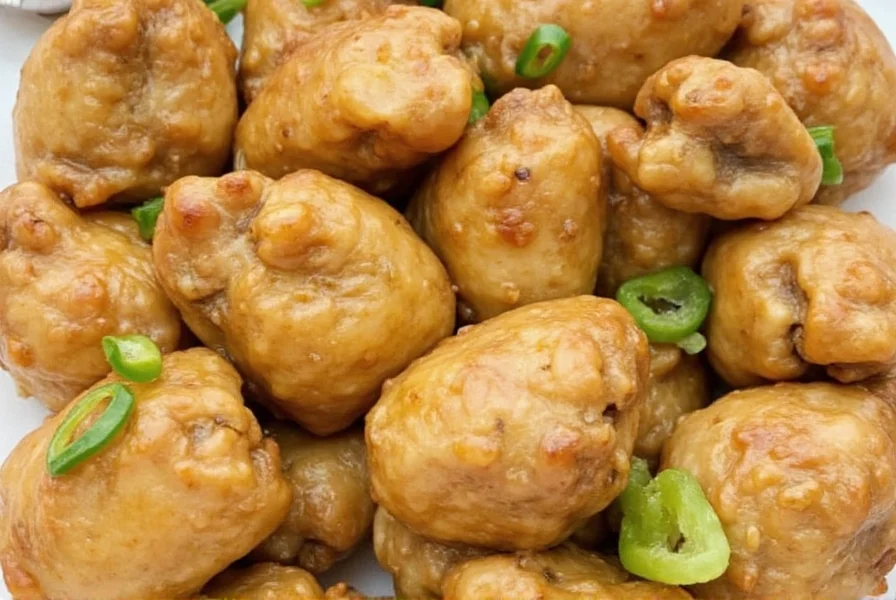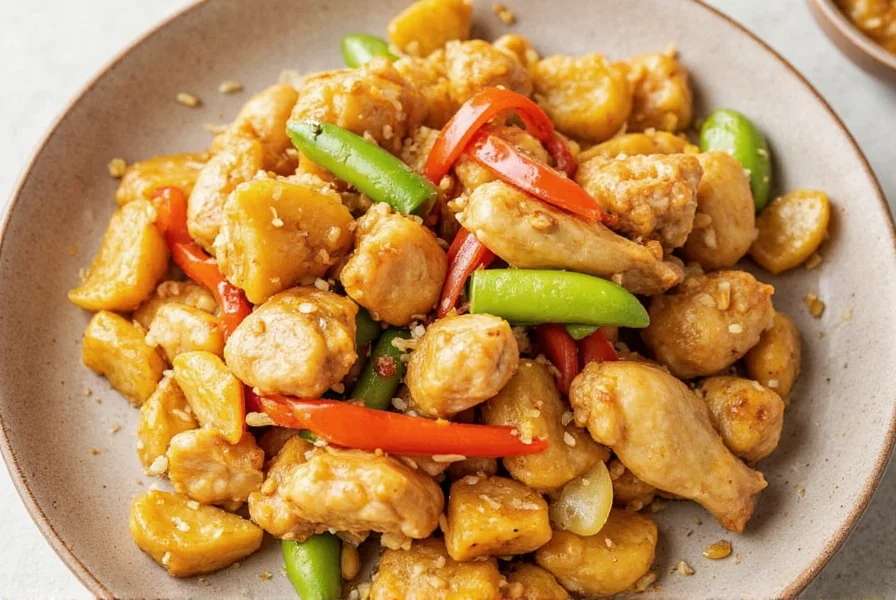If you've ever wondered why restaurant-style ginger chicken tastes so exceptional, the secret lies in three key elements: using young ginger root for its bright, citrusy notes; properly velveting the chicken for tenderness; and creating a balanced sauce with the right ratio of sweet, salty, and umami elements. This comprehensive guide reveals professional techniques for making perfect ginger chicken at home, whether you're following traditional Chinese methods or exploring modern variations.
The Essential Components of Authentic Ginger Chicken
True ginger chicken isn't just about throwing ingredients together—it's about understanding how each component contributes to the final dish. The magic happens when fresh ginger's zesty warmth complements the chicken's natural sweetness, while the sauce components create a glossy coating that adheres perfectly to the meat.
| Core Ingredient | Function | Professional Tip |
|---|---|---|
| Young ginger root | Provides bright, citrusy flavor without excessive heat | Use a vegetable peeler to remove skin, then slice paper-thin against the grain |
| Chicken thighs | Retains moisture during high-heat cooking | Velt the chicken in egg white and cornstarch for restaurant-quality texture |
| Shaoxing wine | Neutralizes gaminess while adding depth | Substitute with dry sherry if unavailable, but never use cooking wine |
| Dark soy sauce | Adds color and molasses-like sweetness | Use only 10% of your total soy sauce for proper coloring without saltiness |
Traditional vs. Modern Ginger Chicken Variations
While authentic Cantonese ginger chicken focuses on simplicity and highlighting the ginger flavor, regional adaptations have created distinct versions worth exploring:
- Cantonese Style: Features minimal sauce, emphasizing the natural flavors of ginger and chicken with just soy sauce, rice wine, and sesame oil
- Hawaiian Plate Lunch Version: Served with mac salad and rice, featuring a thicker, sweeter sauce with added pineapple
- California Fusion: Incorporates ingredients like orange zest or chili flakes for added complexity
- Health-Conscious Adaptation: Uses chicken breast with reduced sodium sauce and increased vegetable content

Step-by-Step Preparation Guide
Follow these professional techniques for restaurant-quality ginger chicken at home:
- Prepare the chicken: Cut 1.5 lbs boneless chicken thighs into 1-inch pieces. Marinate with 1 tbsp Shaoxing wine, 1 tsp cornstarch, and 1 egg white for 15 minutes
- Make the sauce: Whisk together 3 tbsp light soy sauce, 1 tbsp dark soy sauce, 2 tbsp rice vinegar, 1 tbsp honey, and 1/4 cup chicken broth
- Prep the ginger: Slice 3 oz young ginger into paper-thin matchsticks (about 1/2 cup)
- Stir-fry sequence: Heat 2 tbsp peanut oil until shimmering. Fry ginger until fragrant (30 seconds), then add chicken in single layer. Cook undisturbed for 2 minutes before stirring
- Finish the dish: Pour sauce over chicken when 80% cooked. Add 3 sliced scallions. Cook until sauce thickens (1-2 minutes)
Avoiding Common Ginger Chicken Mistakes
Even experienced home cooks make these critical errors when preparing ginger chicken:
- Using mature ginger: Older ginger has fibrous texture and harsh flavor—seek out young ginger with smooth, pale skin
- Overcooking the ginger: Ginger should be fragrant but still slightly crisp—add it early enough to infuse flavor but not so early that it burns
- Adding sauce too early: Introduce sauce only when chicken is 80% cooked to prevent boiling instead of stir-frying
- Using cold ingredients: All components should be at room temperature before cooking to ensure even cooking

Serving and Storage Recommendations
For optimal enjoyment of your ginger chicken:
- Serve immediately over steamed jasmine rice with the sauce properly coating each grain
- Pair with crisp cucumber salad to balance the dish's richness
- Store leftovers in airtight container for up to 3 days—reheat gently in skillet with teaspoon of water
- Freeze portions for up to 2 months; thaw in refrigerator before reheating
Frequently Asked Questions
What's the difference between ginger chicken and orange chicken?
Ginger chicken features fresh ginger as the dominant flavor with a savory-sweet profile, while orange chicken uses orange zest and juice for a sweeter, citrus-forward taste. Ginger chicken typically contains visible ginger slices and has a lighter sauce, whereas orange chicken has a thicker, darker sauce with no visible ginger.
Can I use ground ginger instead of fresh in ginger chicken?
While ground ginger works in a pinch, it lacks the bright, complex flavor of fresh ginger. Use 1/4 teaspoon ground ginger for every tablespoon of fresh ginger called for in the recipe, but add it with the sauce rather than at the beginning of cooking. For authentic ginger chicken, fresh ginger is strongly recommended as it provides both flavor and textural elements that ground ginger cannot replicate.
Why does my ginger chicken turn out dry?
Dry ginger chicken usually results from using chicken breast instead of thighs, overcooking the meat, or skipping the velveting process. For moist results, use boneless chicken thighs, velvet the chicken in egg white and cornstarch, and remove from heat when internal temperature reaches 155°F (it will continue cooking to 165°F while resting). Stir-frying over high heat for the correct time (about 3-4 minutes total) is crucial for perfect texture.
What are the best side dishes for ginger chicken?
Traditional pairings include steamed jasmine rice, which absorbs the flavorful sauce, and simple stir-fried vegetables like bok choy or Chinese broccoli. For a complete meal, serve with a light cucumber salad to balance the richness, and consider adding egg drop soup as a starter. Avoid competing strong flavors that would overpower the delicate ginger notes in authentic ginger chicken preparation.











 浙公网安备
33010002000092号
浙公网安备
33010002000092号 浙B2-20120091-4
浙B2-20120091-4